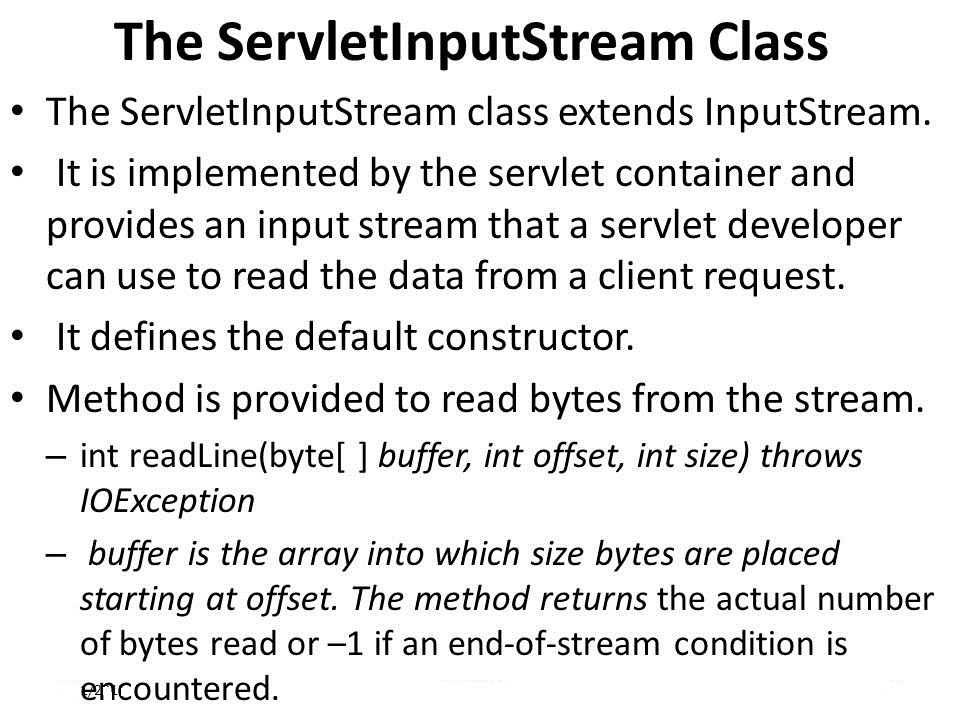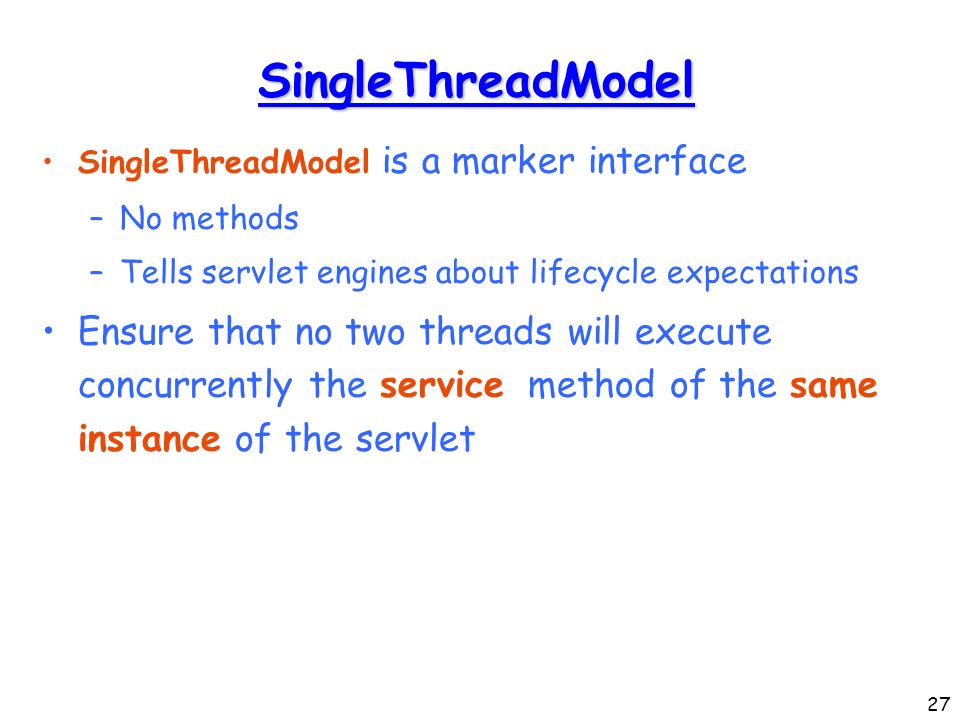An object of ServletConfig is created by the web container for each servlet. This object can be used to get configuration information from web.xml file.
If the configuration information is modified from the web.xml file, we don’t need to change the servlet. So it is easier to manage the web application if any specific content is modified from time to time.
Advantage of ServletConfig
The core advantage of ServletConfig is that you don’t need to edit the servlet file if information is modified from the web.xml file.
Methods of ServletConfig interface
- public String getInitParameter(String name):Returns the parameter value for the specified parameter name.
- public Enumeration getInitParameterNames():Returns an enumeration of all the initialization parameter names.
- public String getServletName():Returns the name of the servlet.
- public ServletContext getServletContext():Returns an object of ServletContext.
How to get the object of ServletConfig
- getServletConfig() method of Servlet interface returns the object of ServletConfig.
Syntax of getServletConfig() method
public ServletConfig getServletConfig();
Example of getServletConfig() method
ServletConfig config=getServletConfig(); //Now we can call the methods of ServletConfig interface
Syntax to provide the initialization parameter for a servlet
The init-param sub-element of servlet is used to specify the initialization parameter for a servlet.
......
parametername
parametervalue
......
Example of ServletConfig to get initialization parameter
In this example, we are getting the one initialization parameter from the web.xml file and printing this information in the servlet.
DemoServlet.java
import java.io.*;
import javax.servlet.*;
import javax.servlet.http.*;
public class DemoServlet extends HttpServlet {
public void doGet(HttpServletRequest request, HttpServletResponse response)
throws ServletException, IOException {
response.setContentType("text/html");
PrintWriter out = response.getWriter();
ServletConfig config=getServletConfig();
String driver=config.getInitParameter("driver");
out.print("Driver is: "+driver);
out.close();
}
}
web.xml
DemoServlet DemoServlet driver sun.jdbc.odbc.JdbcOdbcDriver DemoServlet /servlet1
Example of ServletConfig to get all the initialization parameters
In this example, we are getting all the initialization parameter from the web.xml file and printing this information in the servlet.
DemoServlet.java
import java.io.IOException;
import java.io.PrintWriter;
import java.util.Enumeration;
import javax.servlet.ServletConfig;
import javax.servlet.ServletException;
import javax.servlet.http.HttpServlet;
import javax.servlet.http.HttpServletRequest;
import javax.servlet.http.HttpServletResponse;
public class DemoServlet extends HttpServlet {
public void doGet(HttpServletRequest request, HttpServletResponse response)
throws ServletException, IOException {
response.setContentType("text/html");
PrintWriter out = response.getWriter();
ServletConfig config=getServletConfig();
Enumeration e=config.getInitParameterNames();
String str="";
while(e.hasMoreElements()){
str=e.nextElement();
out.print("
Name: "+str);
out.print(" value: "+config.getInitParameter(str));
}
out.close();
}
}
web.xml
DemoServlet DemoServlet username system password oracle DemoServlet /servlet1







Leave A Comment